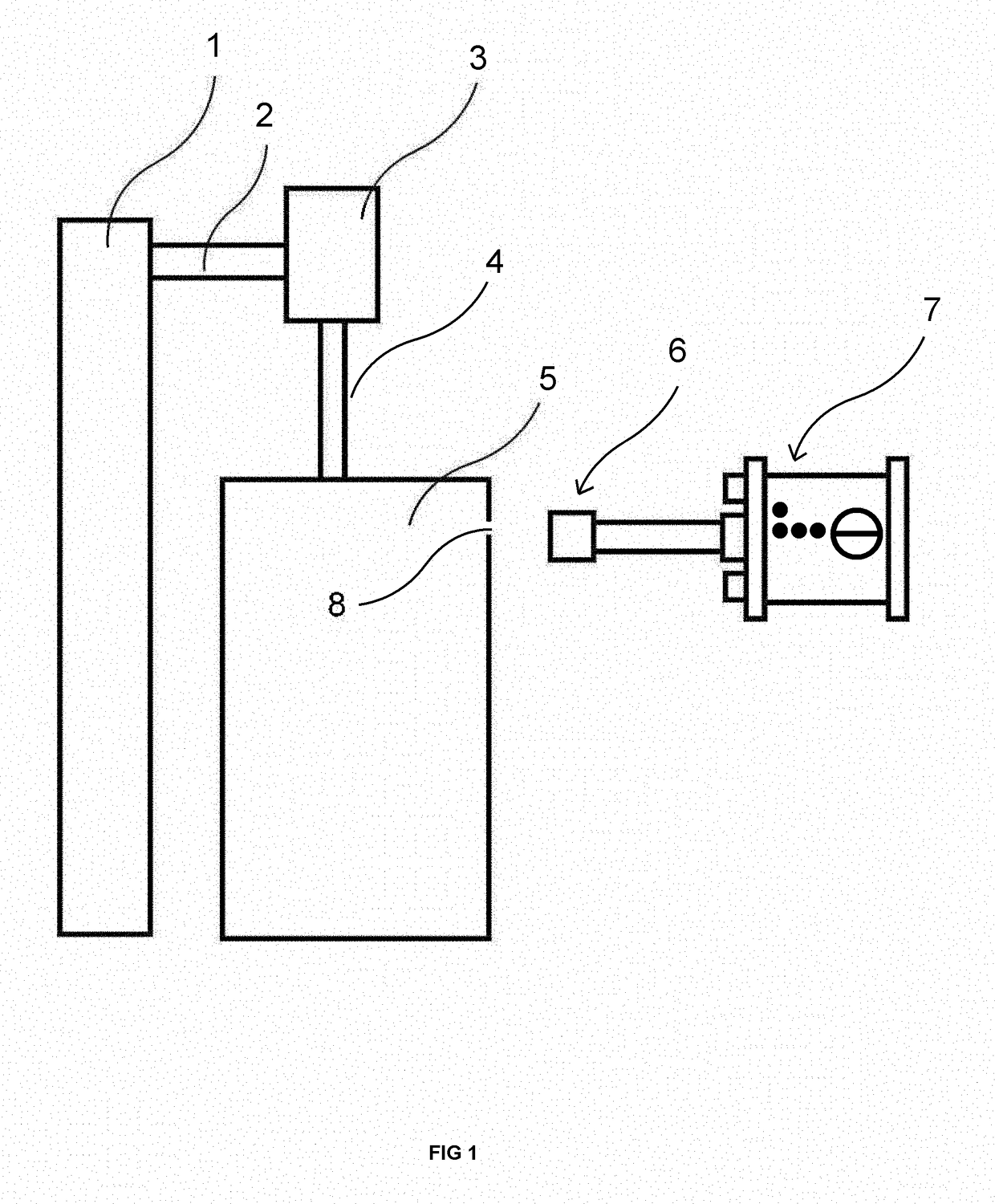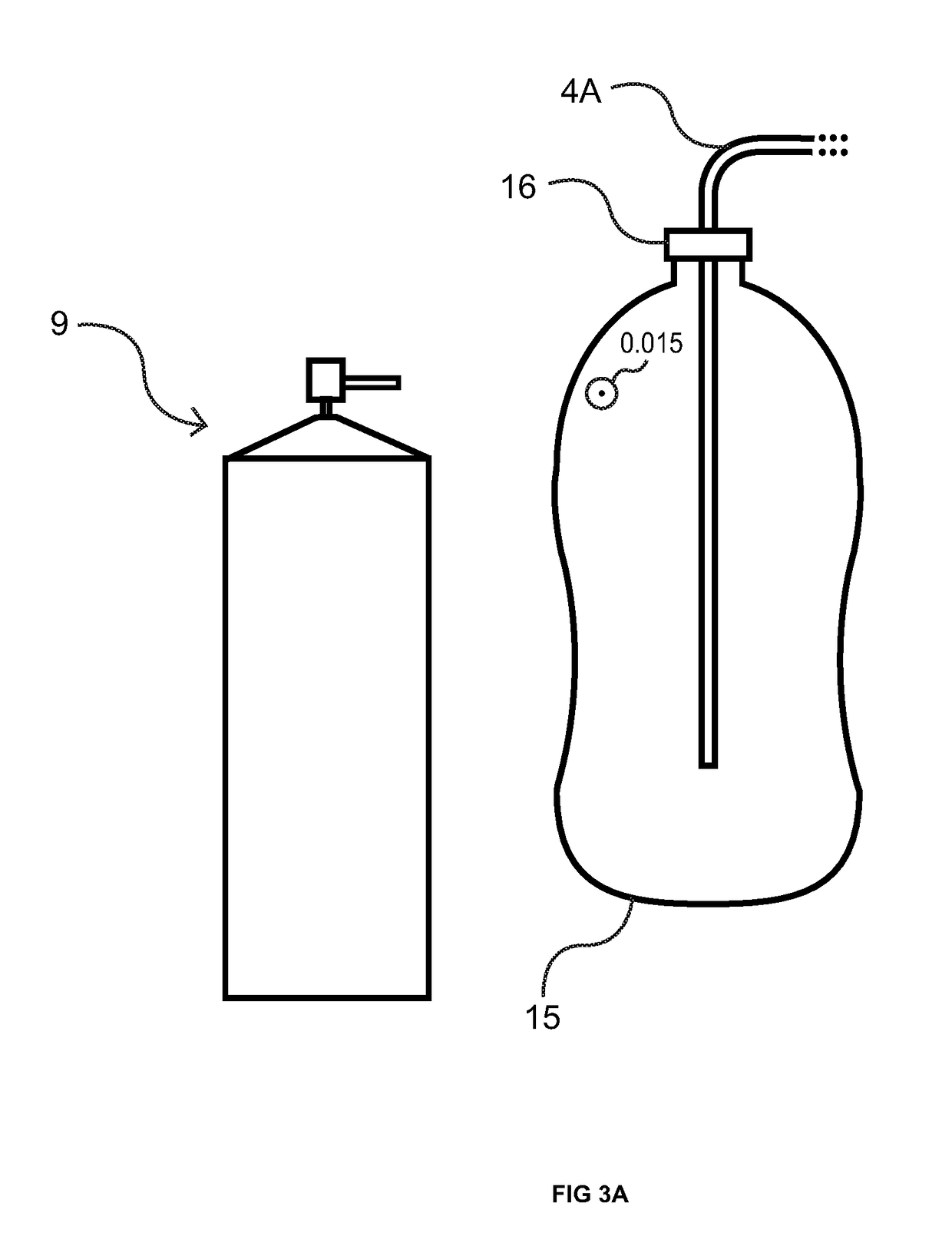Leak detection formula, analyzer and methods of use
a leak detection and analyzer technology, applied in the field of leak detection, can solve the problems of color change inability to determine the exact location, and break the bubble(s) at the leak site, and achieve the effect of fast and accurate leak testing
- Summary
- Abstract
- Description
- Claims
- Application Information
AI Technical Summary
Benefits of technology
Problems solved by technology
Method used
Image
Examples
Embodiment Construction
[0031]FIGS. 1-2 illustrate the leak detection system of the present invention, including the application of the foam. In FIG. 1 the CO2 pressurized bottle 1 is connected to a conventional pressure regulator 3 through hose 2. In operation, the service person will adjust pressure regulator 3 to the correct pressure for the system being tested. Hose 4 connects to sealed system 5. Thus, the pressure regulator 3 feeds CO2 from bottle 1 into sealed system 5 through hose 4. If one or more leaks are present in sealed system 5 then CO2 will escape out of the leak site(s) into the surrounding area. As illustrated, sealed system 5 has a leak at leak site 8 which leaks CO2 into the surrounding area.
[0032]After pressurizing system 5, a service person looking for leakage then moves CO2 detector 7 with sensor 6 round the sealed system 5. Where CO2 is leaking out of sealed system 5, sensor 6 detects the presence of this gas in the surrounding area. Detector 7 reads the sensor's voltage change that ...
PUM
 Login to View More
Login to View More Abstract
Description
Claims
Application Information
 Login to View More
Login to View More - R&D
- Intellectual Property
- Life Sciences
- Materials
- Tech Scout
- Unparalleled Data Quality
- Higher Quality Content
- 60% Fewer Hallucinations
Browse by: Latest US Patents, China's latest patents, Technical Efficacy Thesaurus, Application Domain, Technology Topic, Popular Technical Reports.
© 2025 PatSnap. All rights reserved.Legal|Privacy policy|Modern Slavery Act Transparency Statement|Sitemap|About US| Contact US: help@patsnap.com



